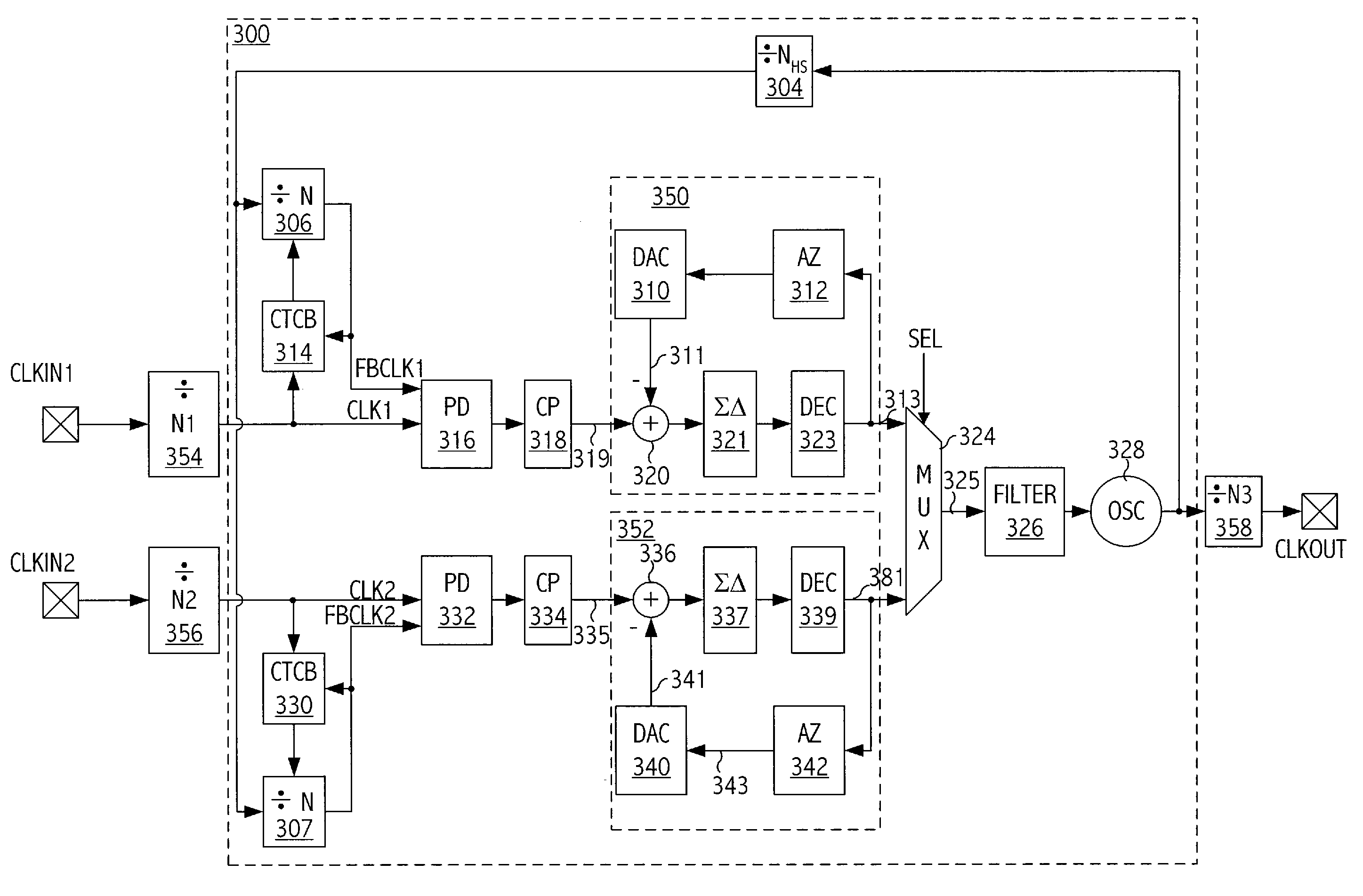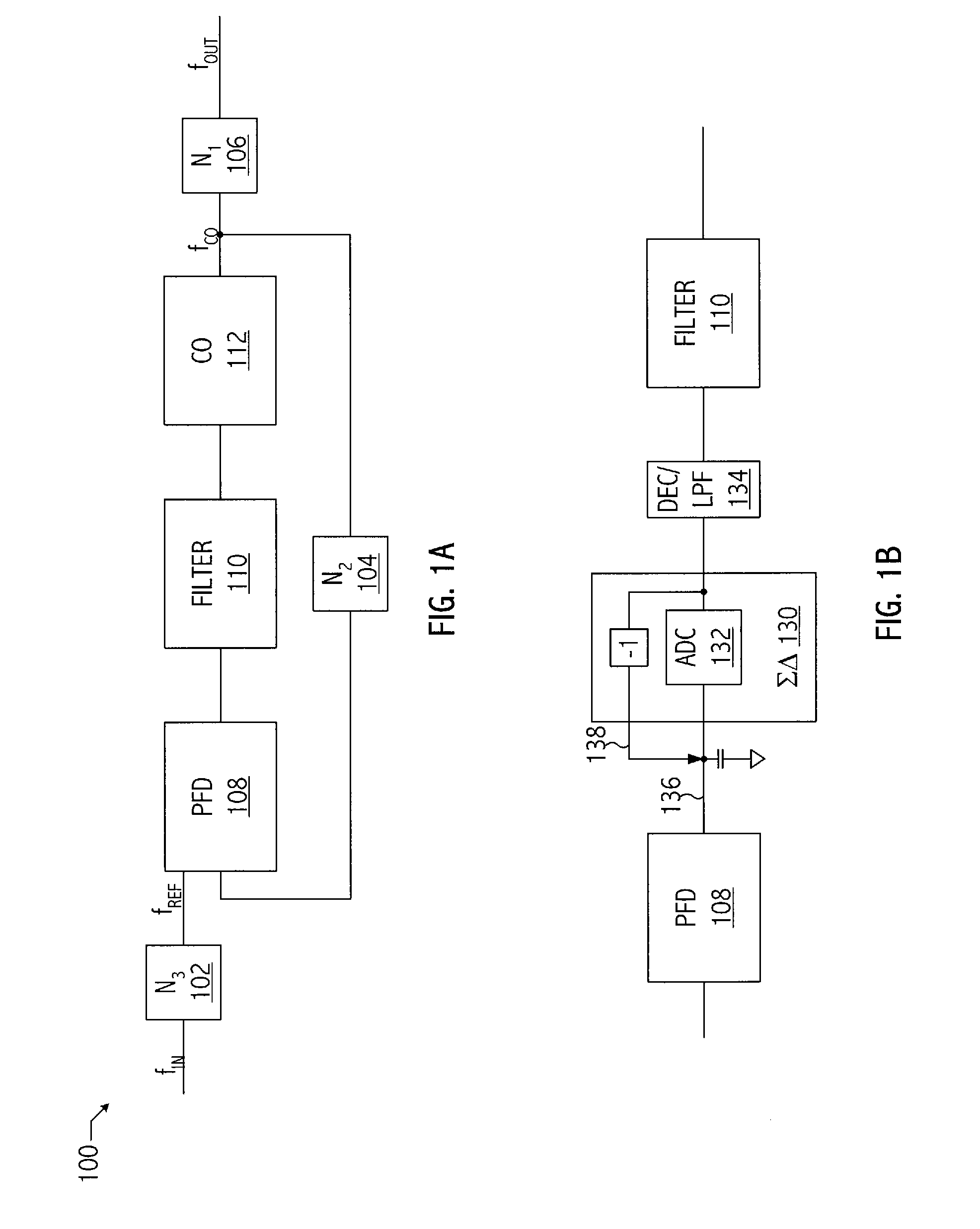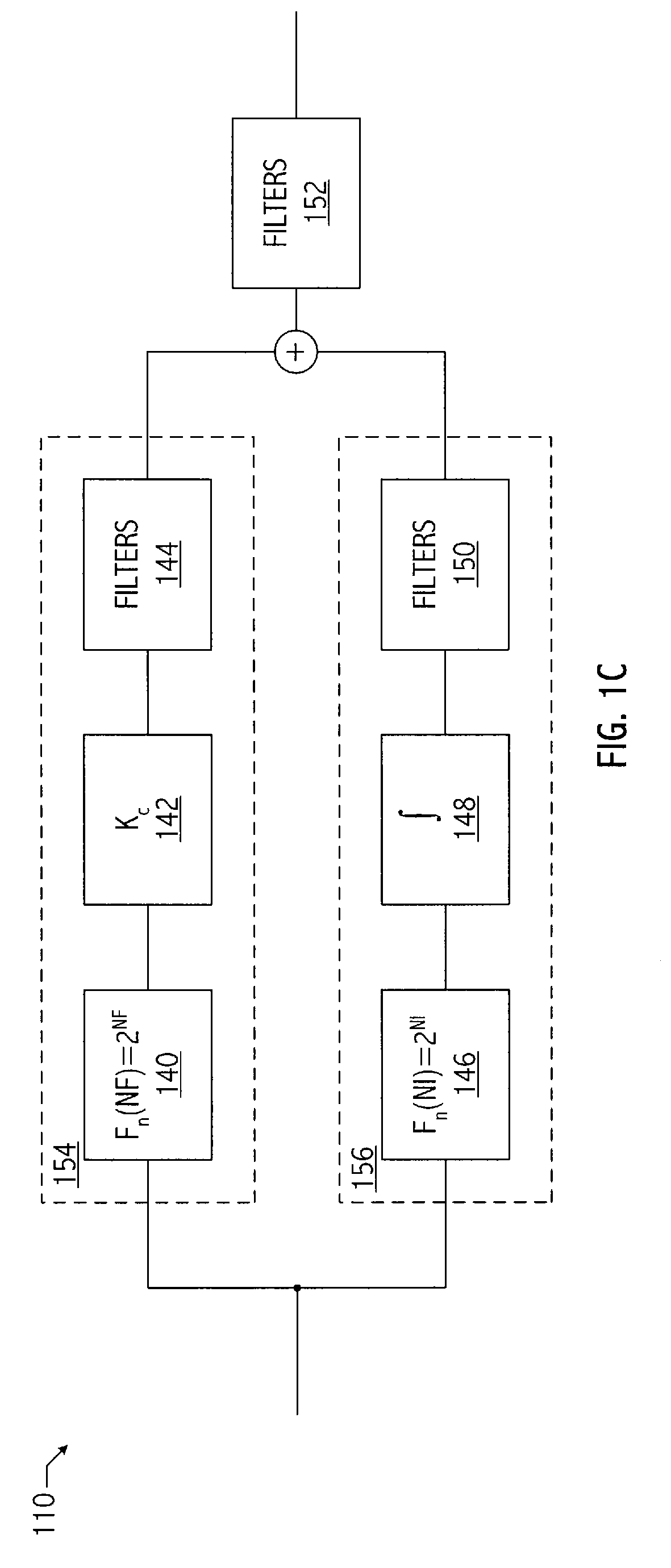Technique for switching between input clocks in a phase-locked loop
a phase-locked loop and input clock technology, applied in the direction of electrical equipment, pulse automatic control, etc., can solve the problems of low-bandwidth plls suitable for meeting tight phase transient requirements, difficult to implement with discrete components, and introduce transmission errors or other problems, so as to reduce or eliminate phase glitches, the effect of being ready to implemen
- Summary
- Abstract
- Description
- Claims
- Application Information
AI Technical Summary
Benefits of technology
Problems solved by technology
Method used
Image
Examples
Embodiment Construction
)
[0026]Referring to FIG. 1A, a phase-locked loop (i.e., PLL) has a programmable bandwidth (i.e., f3dB) and a programmable reference frequency (i.e., fREF). In at least one embodiment of PLL 100, the bandwidth of PLL 100 may be quantified as follows:
[0027]f3dB=(fREFd×2p)×cf(N2,p),
where p is an index value, e.g., 0, 1, 2, . . . , 11, and
[0028]fREF=fINN3=fCON2.
The variable Cf(N2, p) is a correction factor that is based on the value of feedback divider 104 (i.e., N2) and the index value p. A value of p corresponds to a particular f3dB associated with a particular fREF, as illustrated in FIG. 10A. The variable d is based on the index value p and is a factor that adjusts for implementing a continuous time system using a discrete time PLL. In at least one embodiment of PLL 100, a user provides a particular value of p and a particular fREF, which correspond to a particular fREF and f3dB pair. The values of fREF and p are used to determine various parameters that are used to configure PLL ...
PUM
 Login to View More
Login to View More Abstract
Description
Claims
Application Information
 Login to View More
Login to View More - R&D
- Intellectual Property
- Life Sciences
- Materials
- Tech Scout
- Unparalleled Data Quality
- Higher Quality Content
- 60% Fewer Hallucinations
Browse by: Latest US Patents, China's latest patents, Technical Efficacy Thesaurus, Application Domain, Technology Topic, Popular Technical Reports.
© 2025 PatSnap. All rights reserved.Legal|Privacy policy|Modern Slavery Act Transparency Statement|Sitemap|About US| Contact US: help@patsnap.com



